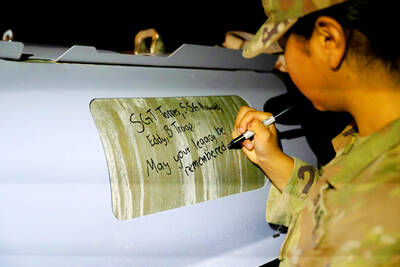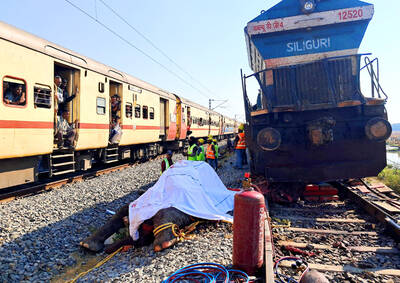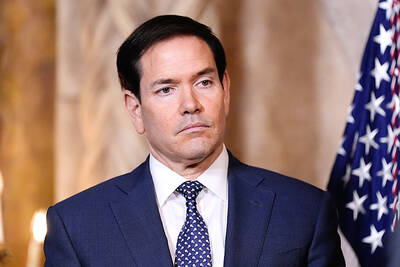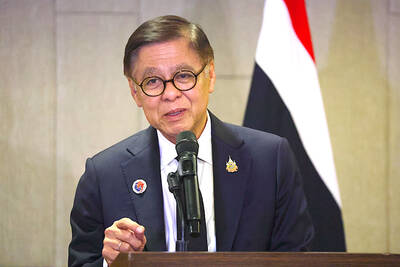When Hong Kong voters go to the polls next week they will face a complex system riddled with quirks, one of which is that only half of the seats in the legislature are actually chosen by direct vote.
Power can never truly be said to be in the hands of the people, as the remaining half of the 60 seats traditionally go to pro-Beijing candidates hand-picked by members of the business community.
The process here baffles even political scientists who study elections.
"It's extremely convoluted. While some other countries may combine more than one type of voting, none combine varying types of franchise," said Michael DeGolyer, director of the Hong Kong Transition Project, which has worked to analyze the direction of political development.
Based on a proportional representation system, voters in the five directly elected geographical constituencies here do not choose individual candidates, but blocs representing various parties or factions.
According to the proportion of ballots cast in their name, parties will be allocated seats in LegCo. Depending on how many seats each party receives, they will appoint members of their party from the published list.
In Kowloon East, for example, with its 524,000 registered voters and five LegCo seats, the minimum for a party to get a seat would be 104,800 assuming everyone voted, as it is calculated by the total number of votes cast divided by the number of available seats.
If not all seats were filled by parties satisfying the minimum quota, then of the remaining parties, those with the most total votes fill the vacancies.
Geographical constituencies are calculated on a ratio of approximately one seat per 100,000 people.
This all leads to unusual campaign flyers like Democratic Party lawmaker Yeung Sum's. It has the normal blurb, but he is pictured with two colleagues and his appeal for voters' ticks asks not that they back him, but instead pick a "list" of candidates.
However, it is the fact that only half of LegCo is selected in this way that remains the system's most unusual aspect. The remaining 30 seats go to so-called "functional constituencies," which operate on a first-past-the-post electoral system, purportedly designed to serve the interests of unions, industries and professional organizations.
According to DeGolyer: "The thing about Hong Kong is that not only do we have different ways of counting votes ... we also have 31 different franchises" in the 30 different functional constituency polls and the geographical polls.
"Usually all that's required of a person to vote is that they satisfy an age threshold and are registered to vote. In Hong Kong, the rules for who can cast corporate votes are extremely murky," he said.
Only 199,000 residents of Hong Kong are registered to vote in functional constituencies, compared to 3.2 million residents registered to vote for candidates in geographical ones.
This leads to major imbalances. The Labour functional constituency, for example, has three LegCo seats, but barely more than 500 registered voters; Kowloon West has 420,000 voters and 4 seats.
DeGolyer argues, however, that it is not the complexities of the system that put Hong Kong people off voting.
"The functional constituencies draw on the history of the British, and if you look closely, the intent of functional constituencies are very clear: to entrench and protect the interests of a class," he said. "Hong Kong people are very intelligent, and they are put off by LegCo's impotence."

REVENGE: Trump said he had the support of the Syrian government for the strikes, which took place in response to an Islamic State attack on US soldiers last week The US launched large-scale airstrikes on more than 70 targets across Syria, the Pentagon said on Friday, fulfilling US President Donald Trump’s vow to strike back after the killing of two US soldiers. “This is not the beginning of a war — it is a declaration of vengeance,” US Secretary of Defense Pete Hegseth wrote on social media. “Today, we hunted and we killed our enemies. Lots of them. And we will continue.” The US Central Command said that fighter jets, attack helicopters and artillery targeted ISIS infrastructure and weapon sites. “All terrorists who are evil enough to attack Americans are hereby warned

Seven wild Asiatic elephants were killed and a calf was injured when a high-speed passenger train collided with a herd crossing the tracks in India’s northeastern state of Assam early yesterday, local authorities said. The train driver spotted the herd of about 100 elephants and used the emergency brakes, but the train still hit some of the animals, Indian Railways spokesman Kapinjal Kishore Sharma told reporters. Five train coaches and the engine derailed following the impact, but there were no human casualties, Sharma said. Veterinarians carried out autopsies on the dead elephants, which were to be buried later in the day. The accident site

‘POLITICAL LOYALTY’: The move breaks with decades of precedent among US administrations, which have tended to leave career ambassadors in their posts US President Donald Trump’s administration has ordered dozens of US ambassadors to step down, people familiar with the matter said, a precedent-breaking recall that would leave embassies abroad without US Senate-confirmed leadership. The envoys, career diplomats who were almost all named to their jobs under former US president Joe Biden, were told over the phone in the past few days they needed to depart in the next few weeks, the people said. They would not be fired, but finding new roles would be a challenge given that many are far along in their careers and opportunities for senior diplomats can

RUSHED: The US pushed for the October deal to be ready for a ceremony with Trump, but sometimes it takes time to create an agreement that can hold, a Thai official said Defense officials from Thailand and Cambodia are to meet tomorrow to discuss the possibility of resuming a ceasefire between the two countries, Thailand’s top diplomat said yesterday, as border fighting entered a third week. A ceasefire agreement in October was rushed to ensure it could be witnessed by US President Donald Trump and lacked sufficient details to ensure the deal to end the armed conflict would hold, Thai Minister of Foreign Affairs Sihasak Phuangketkeow said after an ASEAN foreign ministers’ meeting in Kuala Lumpur. The two countries agreed to hold talks using their General Border Committee, an established bilateral mechanism, with Thailand